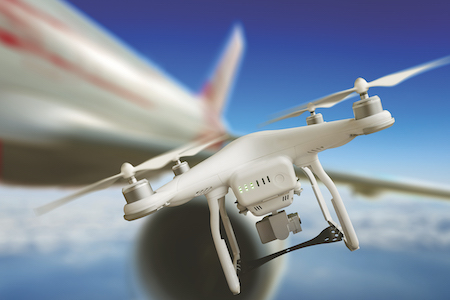It sets out revisions to airline regulations to improve passenger comfort and safety, keeps programmes such as the $36 billion NextGen programme alive, and provides further guidelines for unmanned aerial vehicles (UAVs) or drones.
Hobbyists
The main news for hobbyist flyers is that Section 336 has been completely repealed. This section made a clear distinction between commercial and recreational activities, ruling that the FAA could not regulate the latter. Replacing it is Section 349, which maintains the distinction between the two types of flying, but it states the FAA’s new rules for recreational flyers.
It states that UAVs must:
- Be flown strictly for recreation.
- Be flown within a Community Based Organisation’s (CBO) safety guidelines.
- Be flown within visual line of sight (VLOS).
- Stay out of the way of manned aircraft.
- Be flown in Class G airspace under 400 feet, or have authorisation.
- Must be registered and marked.
It also rules that the operator must pass an Aeronautical Knowledge Test. This test is not necessarily the same as the Part 107 test, and must be administered by the FAA or CBO and electronically. Community Based Organisations are defined as being not-for-profit organisations that are designed specifically for model aviation. Such groups will have to apply to the FAA to be recognised and have members fly under their guidelines.
Section 349 further states that recreational aircraft will be included in new rules and regulations, especially with regards to identification and registration.
Security
Federal agencies have been granted new powers to deal with drones that are deemed to be a threat in the “Preventing Emerging Threats Act of 2018”, a division of the new reauthorisation act. Such agencies can act against an unlawful UAV by disabling its communications or by taking it down directly. UAVs must be identified as being a “credible threat” but that term is not specified in the act. Earlier discussion of the proposed rules led to protestors arguing that the law is too vague in its definitions to be effective, giving the government far more powers than are necessary, especially as a new form of surveillance.
Privacy
The act does address the issue of protecting the privacy of American citizens. Section 357 states that, “It is the policy of the United States that the operation of any unmanned aircraft or unmanned aircraft system shall be carried out in a manner that respects and protects personal privacy consistent with the United States Constitution and Federal, State, and local law.” Section 358 further sets out the responsibilities of the Comptroller General to review and report on privacy issues related to the operations of UAVs.
Commercial drone operators are also required to have a publicly available and regularly updated written privacy policy which outlines how they will collect, use, retain, and delete data from their missions. A Department of Transport (DoT) website will list all issued waivers and authorisations, drone registrations, descriptions and expirations of public drone operations as well as their locations, and links to the agencies that are responsible for enforcing privacy laws.
Enforcement
The FAA has maintained that it should have sole responsibility over airspace across the country, a position referred to as “preemption”. State and local governments have been able to pass laws that regulate drones and other aircrafts despite this. The reauthorisation act calls on the comptroller to conduct a study to evaluate the optimal roles for federal, state, local, and tribal governments in regulating low-altitude aircraft and drones. This would provide consistency to regulations, set out the necessary infrastructure at each level of government, and provide a clear picture of the regulatory authority for each level.
It also calls on the FAA to trial another pilot programme like the Integration Pilot Programme that is currently testing applications of drone operations not covered by present regulations. This new programme would be centred on anti-drone technology and how to counter drones that are flying illegally. This could help lead to developing an efficient reporting system for law enforcement agencies, with an annual report provided by the FAA to Congress. The FAA will be able to make new rules on appropriate anti-drone technologies and measures.


.jpg)
.jpg)
.jpg)

.jpg)



.jpg)
